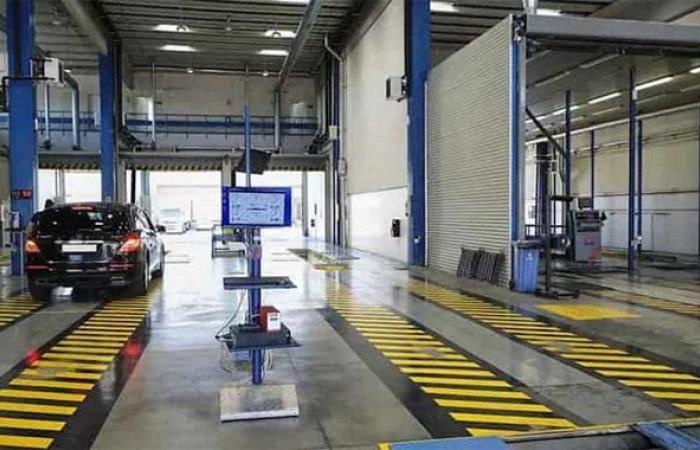The audit services which will soon be carried out will make it possible to assess the degree of compliance with all legal and regulatory provisions relating to the highway code and the specifications relating to technical inspection by each network, technical inspection center and visiting agent.
The National Road Safety Agency (Narsa) has just launched a call for tenders to carry out audit operations on the networks of vehicle technical inspection centers. The opening of bids is scheduled for Friday, December 6 at Narsa headquarters. The amount of benefits is estimated at 2,361,600 DH. The main purpose of the audit services is to assess the degree of compliance with all legal and regulatory provisions relating to the highway code and the specifications relating to technical inspection by each network, technical inspection center and agent. visitor and to identify actions and corrective measures in order to remedy inadequacies and non-conformities. Through these operations, the aim is to enable Narsa to take the necessary decisions in the face of any non-compliance with the technical control specifications or the regulations in force. It also involves assessing the evolution of compliance in the sector compared to the latest audits carried out; develop an action plan for upgrading and developing the sector in relation to the regulations in force and prepare for future developments planned or currently being implemented. Other objectives include the development of an action plan for upgrading and developing the sector in relation to current regulations and improving the quality of technical controls to the extent that they have an impact directly on road safety and the environment. It is also a question of bringing networks, technical inspection centers and visitor agents to comply with the specifications and regulations in force and organize the technical inspection sector and establish it as a structured and organized profession. Through these audit services, Narsa also wishes to have visibility regarding the evolution and development of the sector.
Five types of audit engagement operations
Narsa specifies that five types of audit mission operations will be carried out. This includes the audit of a network of vehicle technical inspection centers and restitution and presentation of the results with proposals for measures to be taken and sanctions to be applied by Narsa for each non-compliance raised. In this context, the service provider must compare the number of technical inspections recorded in the network system for all of the CVTs attached to it with those declared in the Narsa system, particularly after the implementation of the new technical inspection system in 2024. It is appropriate to note the audit mission of monitoring the compliance of anomalies noted during a previous audit operation of an audit of a CCTV network. This consists of carrying out the follow-up audit to verify the degree of satisfaction of the anomalies noted during a previous audit operation of a network of vehicle technical inspection centers and restitution and presentation of the results with proposals. measures to be taken and sanctions to be applied by Narsa. The third type concerns the audit of a CCTV. This operation consists of carrying out the audit of a vehicle technical inspection center including the relevant visiting agents. The holder must compare the number of technical checks recorded in the CCTV system with those declared in the Narsa system. Also included is the follow-up audit of the compliance of anomalies noted during a previous audit operation of a CCTV: this consists of carrying out the follow-up audit to check the degree of satisfaction of the anomalies noted during a previous audit operation of a vehicle technical inspection center and presentation of the results with proposals for measures to be taken and sanctions to be applied by Narsa for each non-compliance raised.
Creation of 174 technical control centers
At the beginning of the year, the National Road Safety Agency (Narsa) launched a call for competition relating to the opening and operation of 174 new vehicle technical inspection centers. Note that the technical inspection sector currently includes 4 networks bringing together 440 technical inspection centers in operation distributed throughout the national territory and operating 900 technical inspection lines for light vehicles and 224 technical inspection lines for heavy goods vehicles. In the Casablanca-Settat region, it is planned to create 48 technical control centers, namely 2 configuration centers (2VL+PL, i.e. heavy goods vehicle technical control centers authorized to control all categories of vehicles including coaches) and 26 centers (2VL, i.e. only light vehicles) in Casablanca; 2 centers (2VL) in Benslimane, 2 centers (2VL) in Berrechid, 3 centers (2VL) in El Jadida, 3 centers (2VL) in Mediouna, 4 centers (2VL) in Mohammedia, 3 centers (2VL) in Nouacer, 2 centers (2VL) in Settat and 1 center in Sidi Bennour. In the Rabat-Salé-Kénitra region, 26 centers will be created (3 in Kénitra, 1 in Khémisset, 7 in Rabat, 6 in Salé, 1 in Sidi Kacem, 1 in Sidi Slimane and 7 in Skhirat -Temara). As for the Fès-Meknes region, 19 new centers will be created (1 in Boulemane, 8 in Fez, 1 in El Hajeb, 1 in Ifrane, 4 in Meknès, 1 in Moulay Yacoub, 1 in Sefrou, 1 in Taounate and 1 in Taza). In the Marrakech-Safi region, 15 new centers will be created, Souss-Massa (15 new centers), Tanger-Tétouan-Al Hoceima (18), Oriental (10), Béni Mellal-Khénifra (7), Dakhla- Oued Eddahab (2), Drâa-Tafilalet (5), Guelmim-Oued Noun (4), Laâyoune-Sakia El Hamra (5). Minimum requirements are required regarding the layout dimensions of a technical control center. Therefore, the layout of the lines must provide adequate spacing around the vehicles to allow visual examination and access to the interior of the vehicle without difficulty. The condition of the surface of the control zone must allow the movement of personnel in complete safety. This spacing is a minimum of 0.5 m between the brake gauge of one line and that of the adjacent line and 1 m between the wall and the adjacent brake gauge. The minimum dimensions of technical control center premises depend on the number of authorized lines. For technical inspection centers authorized to only inspect light vehicles (2VL), the minimum length of the premises is 16m and the minimum width is 13m. As for heavy goods vehicle technical inspection centers authorized to check all categories of vehicles including coaches, the minimum length of the premises has been set at 30m and 19m for the minimum width.






